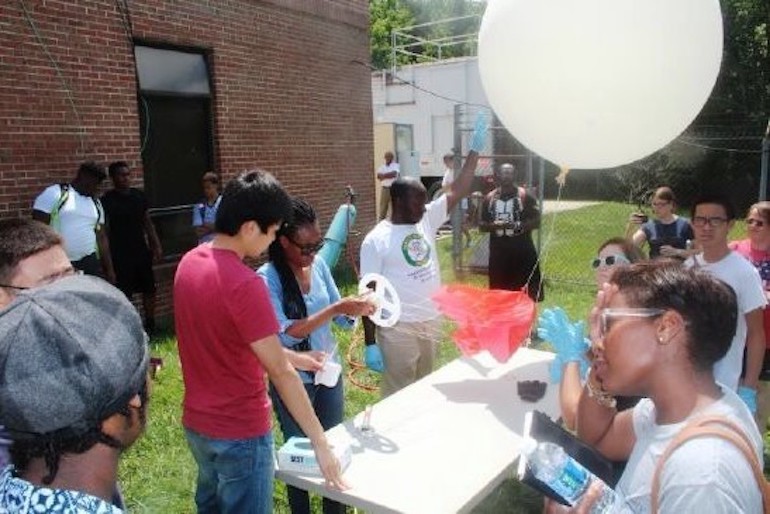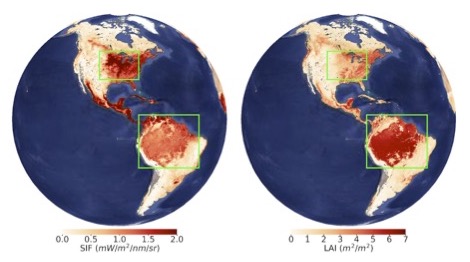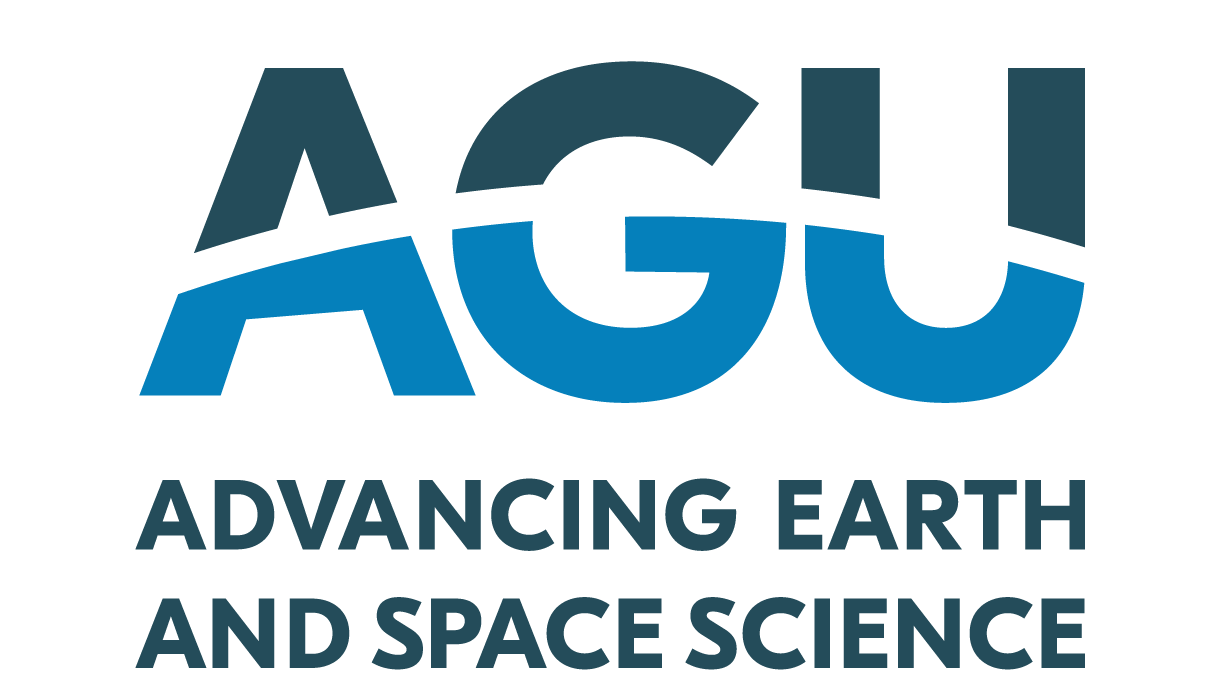For decades, scientists have used satellite data to assess the health and greenness of Earth’s…
Accelerating Minority Representation in the Geosciences: A discussion with Dr. Susan Hoban
An introduction to SaSa (The Student Airborne Science Activation Program, or “now” in Kiswahili) was published last week on nasa.gov, in an article that highlights the continued lack of diversity in geoscience. SaSa is a new NASA program that will work to diversify the field by engaging rising sophomore undergraduate students from minority serving institutions in an 8-week hands-on summer internship that will launch in the summer of 2022. The program also extends through the academic year with the infusion of NASA content into STEM courses at six minority serving universities.
The program is led by NASA atmospheric scientist Dr. Charles Gatebe. BAER Institute’s Dr. Susan Hoban is working in collaboration with Gatebe and the project’s co-investigators as the project’s external evaluator. Hoban sat down with BAERI recently to talk about what SaSa is hoping to accomplish, how it might get there, and the role she will play in helping to keep the project on track.
This interview has been edited for length and clarity.

Student interns, accompanied by their faculty, visit the Howard University Beltsville Campus (HUBC), July 2019. The site will be used to support the SaSa student activities; Image: Ricardo K. Sakai, Howard University
BAERI: How is SaSa hoping to address this diversity problem in geoscience?
Dr. Susan Hoban: The probability is so low, with minority students, that they’ll go into science. I remember in astronomy we were doing cartwheels when women got up to 20 percent, because we just thought that was such an amazing improvement, even though, you know… So the probability is low. And that’s why this program is so important.
There are a number of barriers that get in the way of underrepresented students, including women, going into the field. SaSa is attempting to go after one of the early college barriers, when the students make a choice to opt out of STEM (Science, Technology, Engineering, and Mathematics). Even if they were interested in high school, or in the beginning of college, they make the choice to opt out very early on. SaSa is trying to catch them and say, ‘No, no, you can do this! It’s really cool and amazing, and we’re going to put you on an airplane.’ We want to try to capture them with the thing that NASA does best, which is to amaze and inspire people.
BAERI: So it’s the hands-on experience of being on the plane and doing research that SaSa hopes will help retain these students?
SH: That’s where all the power lies…in the experience. When I went to graduate school, initially, I was not the most focused individual. But when I went to the telescope for the first time, it cemented it. I really enjoyed the whole experience of being like, this is where astronomy is happening. The light is coming into this telescope, and I’m collecting it in a bucket, and I’m taking it back to my office. And all the pieces that went into doing that were all new and unusual and a little scary. But that’s really what hooked me. And so I’m thinking that if the students are anything like that, if you give them the instrument and you put them on the airplane and strap them in, that’s where the magic will happen.
We’re hoping that if a student is interested enough to do SaSa, that at that young age you’ve got a real potential future scientist. I think we just need to not scare them off. That, I think, is the bigger danger. Like, if SaSa makes the internship too difficult — and it would be easy for them to do that because many of them are not used to working with undergrads. They might teach some undergraduate courses, but teaching undergrads and working with undergrads are different things. So they have to be careful to pitch it at the right level, not to make the students feel like, ‘This is dumb,’ but also to not make the students feel like it’s impossible. And that’s going to be the trick.
BAERI: Tell me more about your role with SaSa, and how you got involved.
SH: I used to work with one of the investigators. They needed an external evaluator, and I had not been an evaluator before but he knew I would know how to do it. So he said, ‘We need an evaluator.’ I said, ‘I’m retiring.’ He said, ‘Good!’
The external evaluator, I am learning, has a very different meaning at NASA than at NSF (the National Science Foundation). I’m much more familiar with the role of the evaluator at NSF, where the evaluator is truly, completely external. They just drop in, do the evaluation, and fly out, and the purpose of that is to be careful about conflict of interest. NASA has a different approach, which I actually like better, and that is that they use the evaluator to help the project manager or the principal investigator make course corrections along the way. It’s not so much of a ‘this project is succeeding or this project is failing’ approach. It’s more ‘let’s let’s work together to see where the pitfalls are, and correct them either before they happen or as they happen.’ So, I’ve been very involved with the principal investigator.
BAERI: What have you found so far that has needed correcting?
SH: One thing was pointed out by our other BAERI person, Emily Schaller. Because she’s run SARP (the Student Airborne Research Program) for so long, she instantly saw things that were very idealistic in SaSa’s proposal. For example, the amount of time they were going to give the students to work with the data they’ll have from the plane. They’ll collect the data, and then they’ll have to do something with it, right? And they had budgeted way, way too little time for that. Emily said it would have been too little even for SARP, and those are advanced students, rising seniors. The students we’re going to get will be brand spanking new and are going to have to spend a lot more time learning. So we’ve already had to completely re-plan the summer experience. I don’t get credit for that, Emily gets that.
And then there’s recruiting, of course. Emily and I both work a lot in this area of trying to get students to do things, and in particular trying to get minority students to do things. And recruiting is the nemesis. If you can get them, you’re golden, but you’ve got to get them. And it’s very hard. And just the offer of money…yeah, that’s good. But that’s not how you get them. It helps them once you get them. But you have to get them first. And that’s a big hurdle. In the fall, we’ll start putting out our information. Emily has a lot of good networks from SARP that we can tap into, but I think it’s going to take an awful lot of picking up the phone.
Some of the other things I’ve seen so far have been a little bit smaller. Like it was very clear to me that they need someone who’s going to be living with the students in the summer, and they hadn’t thought about that. You’re going to have twenty-five nineteen-year olds living on campus. Somebody has to be living there with them, it can be a graduate student or something, but they’re too young to just leave on their own in a strange place.
BAERI: As an evaluator, how will you know if and when SaSa is working?
SH: It’s a very good question, because I am tasked with answering that question.There are a number of indicators that I think are important, but not anywhere near complete. For example, we will test attitudes before and after the program, you know, on some five point Likert scale. But that’s not how you know. I spent close to two decades doing teacher education, and at the end of a NASA workshop the teachers all say it’s wonderful. That is not a good measure of how effective the workshop is.
The hard but true answer to your question, I believe, is we have to see how many of the students, for example, go on to SARP. Or at least try. And we’ll have enough time with the first cohort to see how many of them apply to graduate school, or take some Bachelor’s level technical field job, whether it be with NASA or some engineering firm or something. We’ll have one year to see who actually went on. And some of the investigators are saying that if SaSa students choose to be STEM teachers, they’re going to count that too, and that’s fine.
If we get renewed for a second five years, then you’ll really know. Because in 10 years, somebody who’s starting SaSa now could actually be coming out with a PhD. Then you’ll know. So the answer is, that’s the hardest of all questions, and we’ll only get a glimmer into it.


